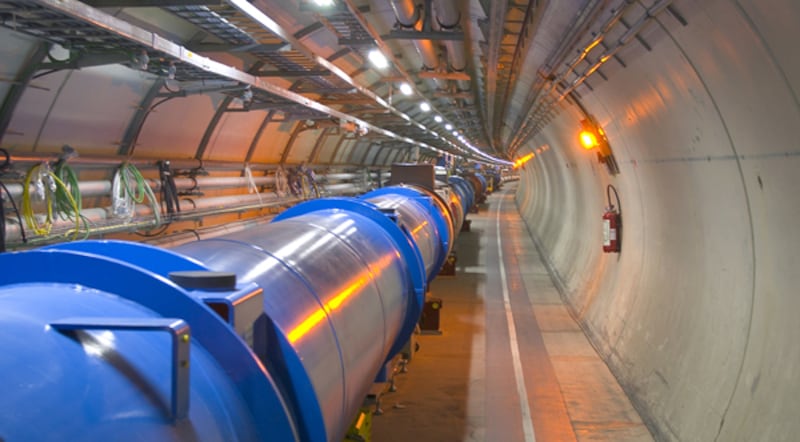The year 2022 ended with some welcome news for the physics and engineering community in Ireland. On November 15th, Simon Harris, Minister for Higher Education, Research, Innovation and Science confirmed his department will present a formal recommendation to Government that Ireland join Cern, the European Organisation for Nuclear Physics.
Cern has long been one of the world’s leading scientific laboratories, its particle accelerators providing vital information on one of the most fundamental questions of science – the structure of matter and the nature of the forces that bind it together. However, Ireland, almost uniquely among European nations, has had no formal association with the organisation to date, a strange anomaly that has persisted despite years of campaigning.
There is little question that membership of large international scientific collaborations such as Cern is very important for small nations. For example, Ireland has benefited greatly from membership of the European Space Agency (ESA) and more recently the European Southern Observatory (ESO).
One reason is that membership of such collaborations allows small countries with limited national budgets to participate in “big science” experiments that cost billions of euros; another is that it allows Irish scientists and engineers to work with the best in the world. Most importantly, membership of Cern would allow our undergraduate and postgraduate students to undergo training at one of the world’s elite scientific facilities.
READ MORE
Another benefit concerns the technology used in the exotic experiments at Cern. Time and again, the need for cutting-edge technology at the facility has led to remarkable advances in engineering and computing. Famously, the need for thousands of Cern scientists to share vast amounts of data online led to the development of the world wide web by Cern scientist Tim Berners-Lee. To this day, the use of the internet involves software protocols developed and maintained by its scientists, a precious resource that we all enjoy free of charge.
Other technological spin-offs include important advances in superconducting, microelectronics and imaging technology. Until now, high-tech companies in Ireland were at a great disadvantage in competing for the large contracts associated with the development of such technologies at Cern.
[ Ireland’s refusal to join Cern is perplexing and disadvantages physicists hereOpens in new window ]
The great irony of Ireland’s failure to join Cern to date is that an Irish scientist played a key role in instigating the entire field of elementary particle physics. In 1932, the brilliant young Irish physicist Ernest Walton and his colleague John Cockcroft developed the world’s first successful particle accelerator at the Cavendish laboratory in Cambridge. Famously, they used their device to split the atomic nucleus, a ground-breaking experiment that marked the first transmutation of the atom by artificial means.
It was quickly realised that such accelerators offered a powerful tool for studying the fundamental structure of matter at the subatomic level (research that has nothing to do with nuclear power or nuclear weapons). However, the cost of building large accelerators was prohibitive for individual nations and it was decided in the 1950s to build a pan-European facility in Geneva.
Since then, many important discoveries have been made at Cern accelerators, establishing it as a world leader in the field. The most famous of these was the detection in 2012 of the elusive Higgs boson in experiments at Cern’s Large Hadron Collider (LHC), a landmark experiment that provided a crucial missing piece of the so-called Standard Model of particle physics.

As regards future research at the LHC, one fascinating experiment is the study of subtle differences between matter and antimatter, an investigation that may one day explain how our universe came to be dominated by matter. It’s worth noting that a research group at the UCD School of Physics led by Prof Ronan McNulty has long played a prominent role in this experiment.
More generally, the extremely high energy density achieved in accelerator experiments mimics the conditions prevalent in the early universe. Thus, experiments at the LHC offer an important window on the infant universe and may even shine light on outstanding cosmological questions such as the nature of dark matter and dark energy. A truly world-class enterprise in which the cream of Irish scientists, mathematicians and engineers should be allowed to play their part.
Dr Cormac O’Raifeartaigh lectures in physics at the South East Technological University (Waterford) and is an associate research fellow at the Dublin Institute for Advanced Studies. He blogs at www.antimatter.ie

















